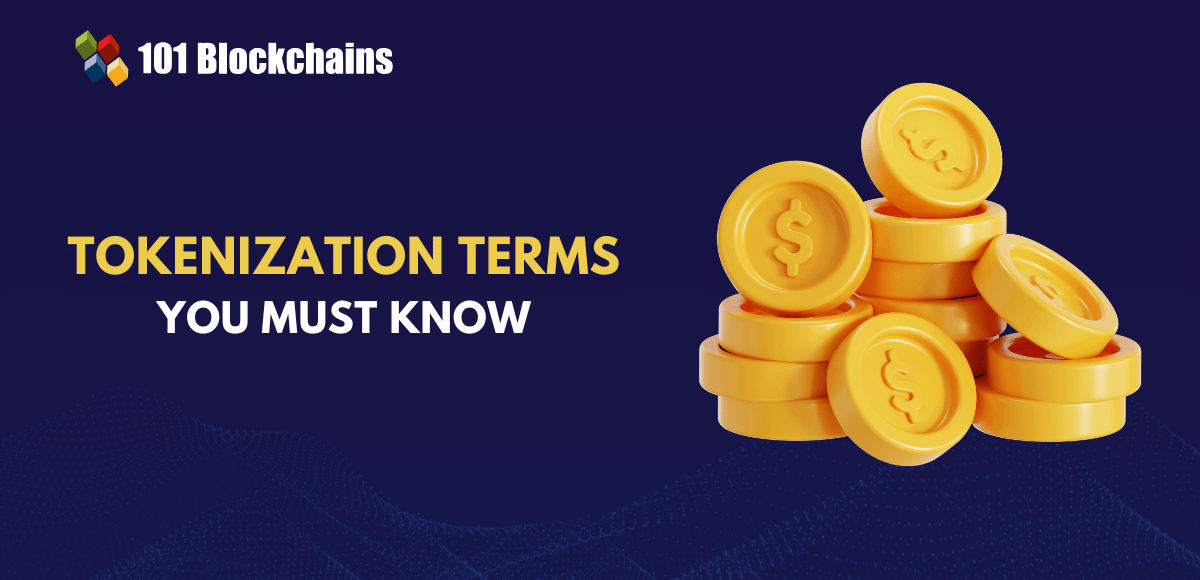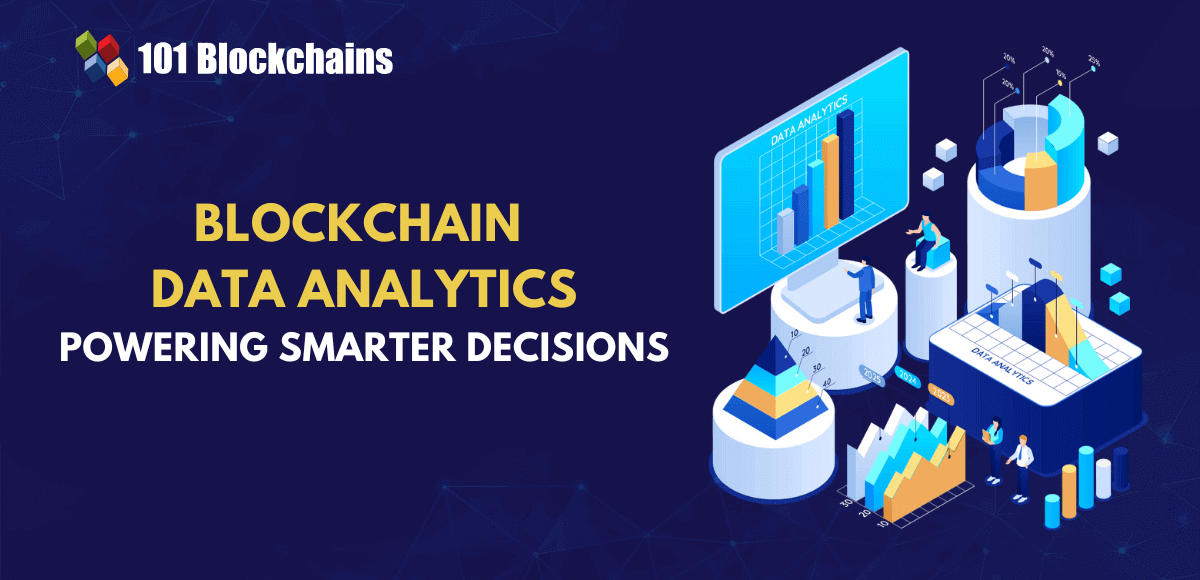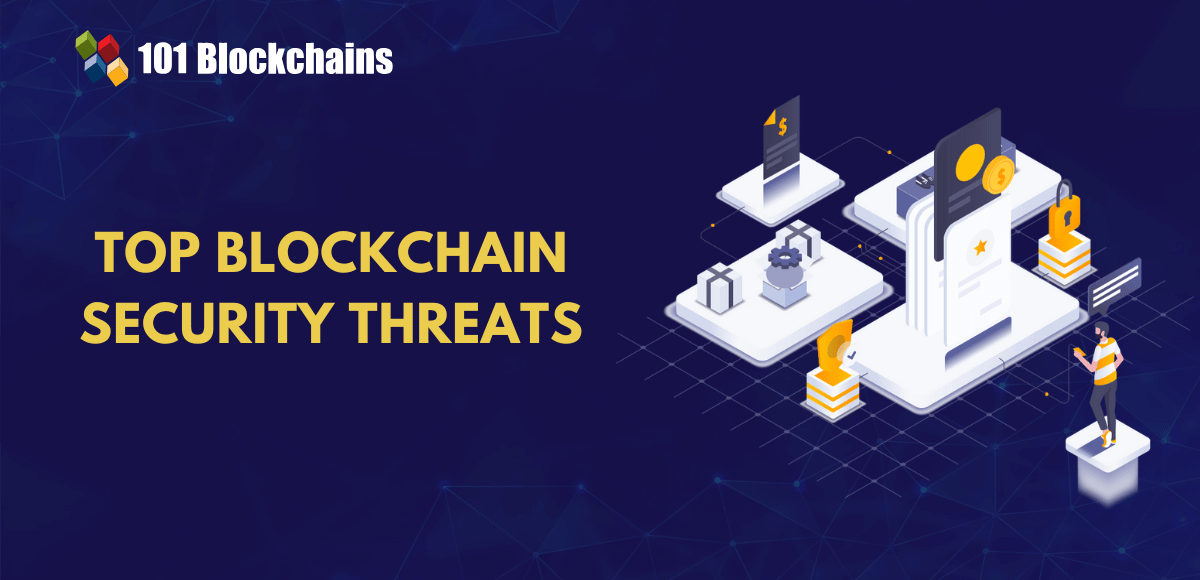Learn how blockchain truly works, master key definitions, and uncover what makes smart contracts so "smart." Dive into the fundamentals, gain valuable insights, and start your blockchain journey today!
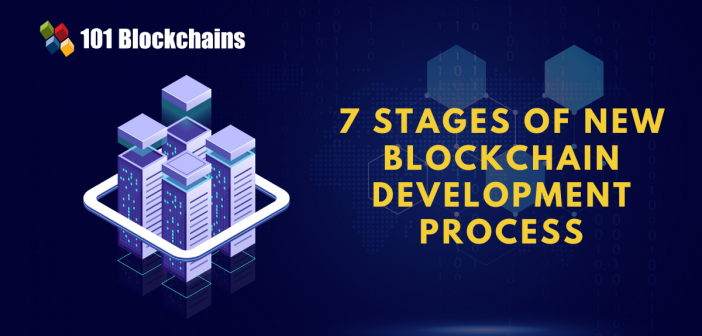
- Blockchain
Diego Geroni
- on May 26, 2021
7 Stages of New Blockchain Development Process
Blockchain technology has all the required ingredients for revolutionary technology to change the face of technology known to us. Initially, the technology served as the foundation for transforming the financial sector, and presently, it is finding applications in many other domains. With the versatility, transparency, security, and efficiency of blockchain, many enterprises are turning towards blockchain-based solutions for transforming their business operations.
In this case, enterprises and professionals are eager to know about the blockchain development process. While it is reasonable to assume that blockchain application development would have considerable similarities with conventional software application development, the truth states otherwise. Let us find out more about the blockchain development stages and how you can master blockchain application development with them.
Blockchain Application Development
Before beginning with the stages in blockchain development, you should remember that blockchain provides immutability in the chain of records or blocks. The blocks in the blockchain contain files, transactions, and related data. Furthermore, the blocks are paired with each other through hashes. A detailed overview of blockchain basics is important before you start with blockchain development.
Now, the next point associated with blockchain development is the requirement for building a blockchain from scratch. Developers can take months and even years to complete a blockchain development process, depending on the complexity of the project. On the other hand, open-source blockchain platforms available on the market can help in developing blockchain solutions with forking. Some of the notable platforms that enable blockchain application development include Ethereum, Hyperledger Fabric, and many others.
Build your identity as a certified blockchain expert with 101 Blockchains’ Blockchain Certifications designed to provide enhanced career prospects.
Why Focus on Blockchain Development?
The next important concern of an individual before reading a blockchain development tutorial refers to the reasons for the same. Many innovators are slowly finding out new approaches for the implementation of blockchain throughout the financial services industry, retail, governance, supply chain, and many other sectors for the transformation of business models. Blockchain could help in adding value to businesses through different plausible advantages such as the following.
1. Better Transparency
Blockchain solutions can provide better transparency regarding the history of transactions. Blockchain is actually a distributed ledger, and all participants in a network have a copy of the same ledger, which is updated with every transaction. The consensus mechanism employed for the network helps in validating the ledger, thereby implying the agreement of all participants with the ledger. Modification of a single record in the blockchain leads to further changes in the following records.
2. Improved Provenance Tracking
The blockchain development process has started to gain the attention of companies for improving their supply chain management routines. Companies with the capabilities for recording the supply of goods from one place to another are doing the same with greater efficiency on the blockchain. The facility of a comprehensive audit trail makes it easier to prove provenance on the blockchain.
3. Lower Costs
Blockchain development is also a favorable proposition for enterprises on the grounds of cost reduction. Blockchain removes the need for intermediaries and other third parties for establishing trust. The verification of all transactions on the blockchain by all network participants creates a trustless environment, thereby cutting significantly on costs.
4. Speed
The most prominent reason to focus on a blockchain development tutorial is the potential of blockchain solutions for improved speed. It is easy to ensure faster and secure transactions through automation and simplification of business processes with the help of blockchain. There is no reason to worry about managing multiple ledgers, and all participants can access the same information at all times. As a result, you don’t have to spend too much time on different transactions, thereby improving your speed considerably.
Want to know about supply chain management in blockchain? Enroll Now in Enterprise Blockchains and Supply Chain Management Course
Steps in Blockchain Development
It is quite clear that a blockchain development process could speed up business processes while making them better and smarter. Blockchain has the potential for transforming various industries such as healthcare, financial services, supply chain management, and others. According to a report published by CB Insights, companies such as Walmart and Pfizer have been successful in implementing pilot blockchain projects for food safety and medicine tracking.
Therefore, business owners, product managers, innovators, and entrepreneurs must grab the opportunities for integrating blockchain into their business processes. So, enterprises must have a clear impression of how to develop blockchain solutions for capitalizing on the prospects associated with the technology. Without wasting any further time, let us reflect on the different stages involved in designing a comprehensive blockchain solution.
You would encounter the following critical steps in the process of developing a blockchain solution, and although your approach may vary considerably on the basis of your requirements, the format will remain the same.
Here is an outline of the blockchain development steps that can contribute value to an organization’s business operations –
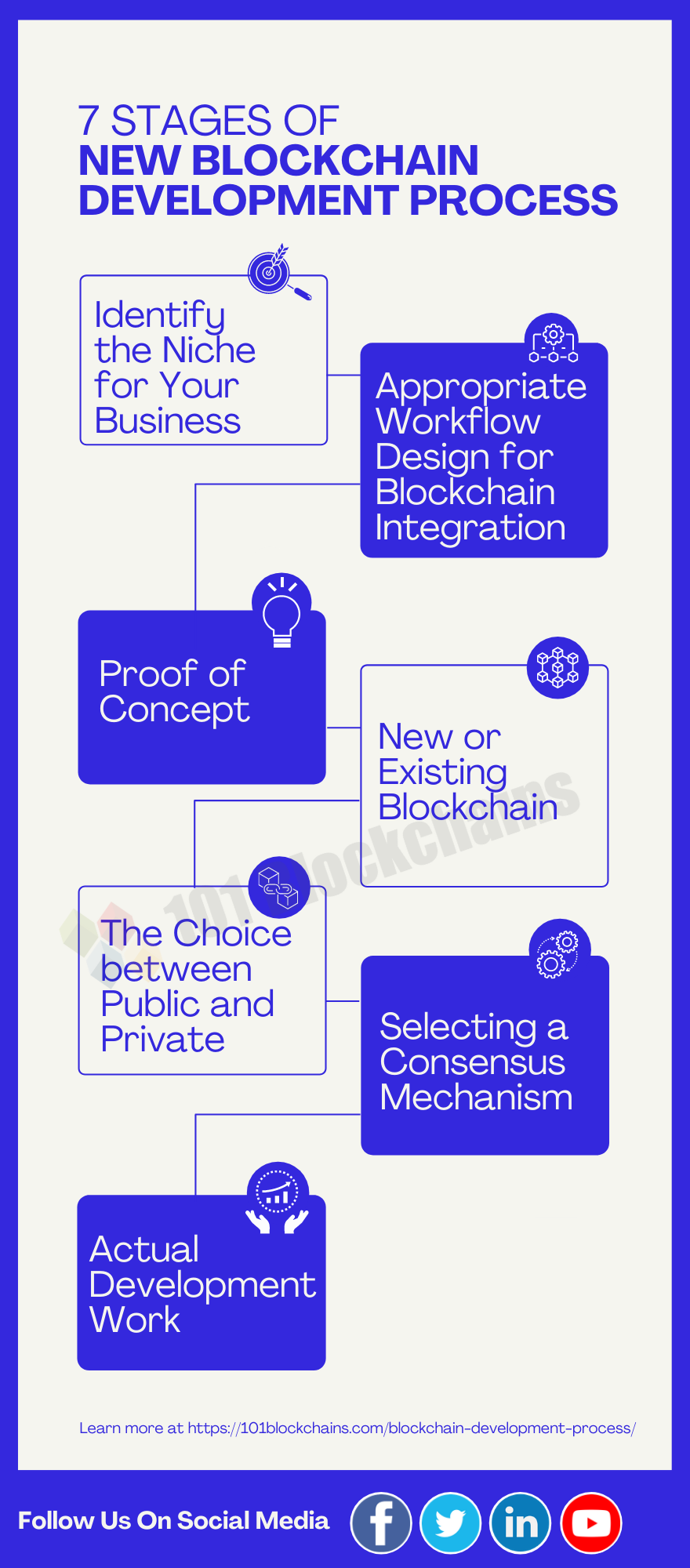
Please include attribution to 101blockchains.com with this graphic. <a href='https://101blockchains.com/blockchain-infographics/'> <img src='https://101blockchains.com/wp-content/uploads/2021/05/blockchain-development-process-1.png' alt='blockchain development process='0' /> </a>
1. Identify the Niche for Your Business
One of the foremost concerns associated with blockchain development refers to the selection of niche. The niche must offer a credible platform for the creative and relevant application of blockchain technology to derive value. In addition, an overview of the different use cases of blockchain indicates that distributed ledger technology is applicable for all industries such as insurance, banking, intellectual property rights, and others.
On the other hand, enterprises and developers should conduct a comprehensive analysis of the existing projects before they begin building blockchain solutions. It is important to know that if blockchain solves problems in the supply chain, then you don’t have to design a project that solves blockchain problems. When you are about to embark on a blockchain development process, make sure that you have a good idea to work with. Think twice about the possibilities of bringing your idea to life and then start on your blockchain development project.
Announcement – Certified Enterprise Blockchain Architect (CEBA)™ Certification is Up to Date, Explore to understand blockchain architecture advanced concepts such as development.
2. Appropriate Workflow Design for Blockchain Integration
After the selection of a niche, developers have to worry about planning for the project’s blockchain development steps. You must have given adequate thought and time to identify a niche that can offer value to your end-users. At the same time, the niche of your choice can also provide the ideal prospects for improving your profits considerably.
Once you are sure about giving shape to your idea in the selected niche with blockchain, take some time to think about the feasibility of blockchain. Do you really need blockchain for solving the problem at hand? In some cases, blockchain development projects start with exciting and highly comprehensive whitepapers featuring exciting visuals. However, some projects meet abrupt failures and shutdowns largely because developers did not have clarity regarding the use of blockchain.
Therefore, developers have to prepare a formidable workflow that can help in identifying the things they need for the blockchain development process and the ones they don’t need. Throughout different stages in the blockchain development project, developers have to carry out evaluation, formulation, and prioritization for experimenting with blockchain.
At the same time, the workflow design also emphasizes the selection between on-chain & off-chain business entities. Developers should use this time for refining the new product development process with an example roadmap. Create deadlines for releasing different versions such as alpha, beta, and the other ready-to-launch versions related to an application.
Just remember that the primary deliverable in the second stage of how to develop blockchain solutions is a conceptual workflow of the proposed application along with a blockchain model. Developers have to make decisions regarding the best alternative among the permissioned and permissionless networks for building the project.
At the same time, developers must also think about the decisions related to front-end programming language. Developers must also work on a selection of an external database as well as servers for their application. Once the ideas and the workflow are ready, you can move to the next step in the blockchain development process.
Aspiring to make a lucrative career as a blockchain developer but not sure how? Check the detailed guide Now on How To Become Blockchain Developer?
3. Proof of Concept
The proof-of-concept is basically the method of showcasing practical potential associated with a blockchain project. The proof-of-concept could be a theoretical blueprint or a prototype, and there are different stages for creating a POC, which showcase the feasibility of the project.
The theoretical buildup is one of the critical blockchain development steps as it communicates the productivity and viability of the product for end-users. So, developers should fabricate proposals for explaining different parameters associated with the project.
Another important requirement, in this case, would refer to the prototype, which follows the theoretical buildup and the feedback from stakeholders. The prototype should showcase sketches outlining the information architecture, designs, tested products, and mockups. The approval of the prototype is essential for starting work on visual and technical aspects of the application.
4. New or Existing Blockchain
When you are ready to start the blockchain development process, it is important to ask whether you need an existing blockchain or you need to develop a new one. If you want to opt for building your own blockchain, then you have to prepare for months of the development process. Developers have to go through complicated processes of designing nodes and blockchain instances.
At the same time, they have to ensure the planning of the configuration for different elements, including the reissuance and asset issuance, along with block signatures and many other factors. Furthermore, developers have to create the APIs alongside the design interfaces for admins and users. In addition, users have to focus on the selection of programming languages as well as servers and external databases for the project.
Curious to learn about blockchain implementation and strategy for managing your blockchain projects? Enroll Now in Blockchain Technology – Implementation And Strategy Course!
5. The Choice between Public and Private
One of the most common concerns that developers have to face with respect to the design of blockchain projects is the choice of public or private blockchain. You need to find out whether a public or a private blockchain would suit your needs better. Public blockchains are slow, resource-intensive, and expensive, albeit with profound benefits of transparency, independence, and trustless environments.
Private Blockchain presents the value of cost benefits and speed while posing setbacks of limited access. It does not allow unrestricted access or privileges for checking transaction history and creating new blocks. Additionally, private blockchain does not feature adequate transparency and anonymity like public blockchain. Therefore, developers should take note of the long-term applications of a blockchain solution for making decisions in this step.
6. Selecting a Consensus Mechanism
Any new product development process with example, would showcase the importance of consensus mechanisms in developing blockchain solutions. The consensus mechanism is important, especially in the case of public networks. It is basically an algorithm that enables trust among independent participants. Proof-of-Work is the most commonly followed consensus protocol.
Some of the other examples of consensus mechanisms utilized commonly include Proof-of-Stake, Delegated Proof-of-Stake, and Proof-of-Authority. The other prominent consensus mechanisms include Proof of Elapsed Time, deposit-based consensus, and Byzantine Fault Tolerant consensus mechanisms. Each consensus mechanism has unique exceptions that dictate the flow of transactions in your blockchain solution. Experts recommend the selection of a suitable consensus mechanism on the grounds of needs in your individual use case.
7. Actual Development Work
After selecting the important components for blockchain solutions and planning all stages carefully, you should start the blockchain development process. You can leverage APIs for generating key pairs and addresses, performing data authentication, auditing functions alongside data storage and retrieval.
As a result, you can achieve the desired functionalities in your blockchain solution for providing ease of use to end-users. When the application is ready for passing the alpha release phase, you should work on deploying the application for end-users. Deployment basically involves placing applications into the already developed application server.
In addition, administrators should also have the facility to ensure that the app can be deployed to various resources through provisioning. Once you are done with provisioning, you can host the application on the main chain. Developers must also ensure that the application allows flexibility for upgrades with emerging business requirements and priorities.
Start learning Blockchain with World’s first Blockchain Career Paths with quality resources tailored by industry experts Now!
Final Words
When you are done with all these steps, you can generally land up with a solution according to your needs. The decisions related to all stages should follow the objectives you want of the solution alongside the desired infrastructure. Completely new blockchain solutions could lead to a long and comprehensive blockchain development process.
However, you can also opt for existing blockchain platforms that can support the resourceful development of blockchain applications. In the long run, blockchain solutions would take over all sectors for their numerous benefits. If you want to learn more about blockchain development and capitalize on career opportunities, then start right now!




